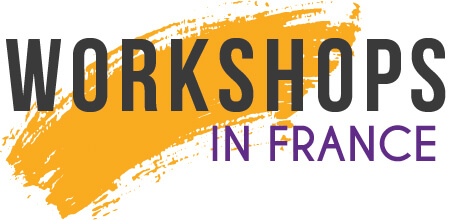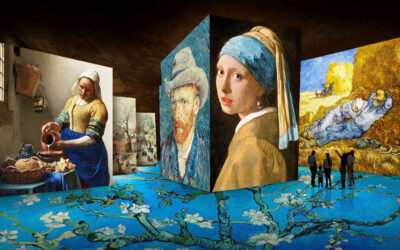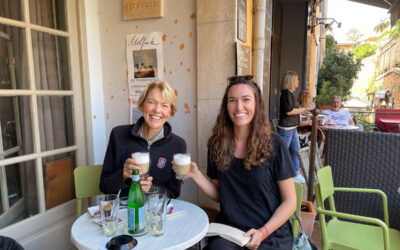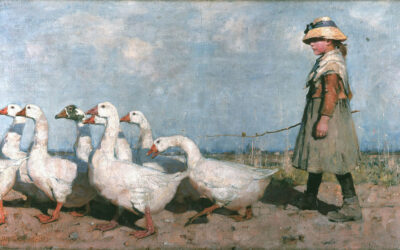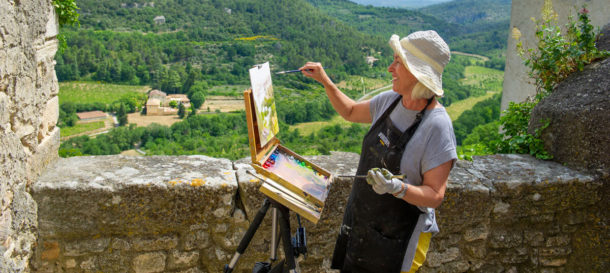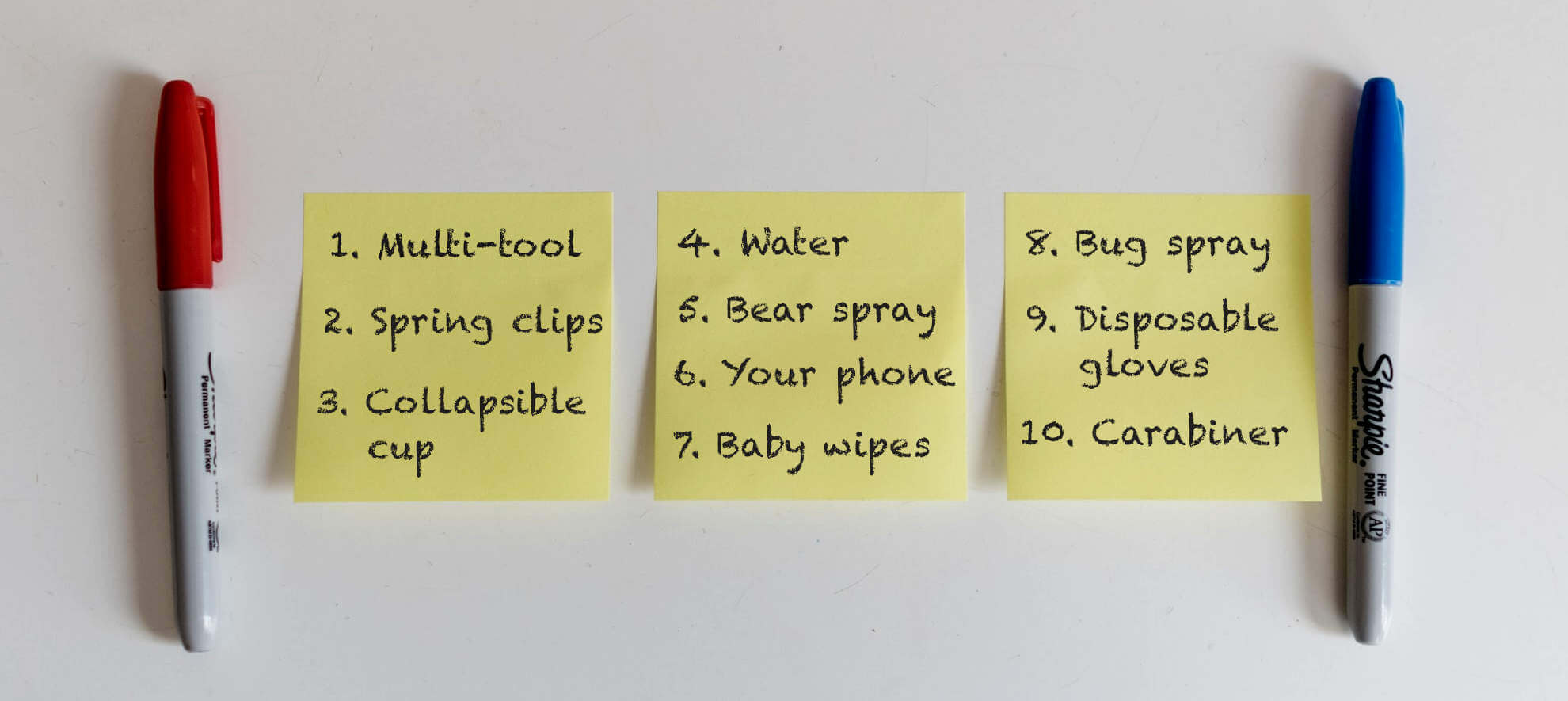
As far as actual painting supplies go, there are many lists of what to take when plein air painting. Just Google them. Over the past 10 years of delivering plein air workshops and after 1000s of paintings outdoors, we have discovered there are other things that can save the day which might not be obvious and are not on everyone’s list.
In addition to painting gear, what else qualifies as handy, timesaving and essential to your painting enjoyment? Some may consider these superfluous, especially if weight and distance are real factors—but bear in mind we do bring our guests as close as possible to painting locations to avoid such burdens.
Some of our recommendations are:
1. Multi-tool
Very handy when you cannot unscrew that lid off a tube of paint. Or you wish you had a pair of scissors. Or your French easel’s wing nuts need an extra torque.
2. Spring Clips
Clip canvas to a board, provide extra security for your umbrella, or clamp on a holder to support the handle of your solvent wash tank.
3. Collapsible Cups
This is for, um, drinking. Just watch what you drink when you paint (just sayin’). If your paint is water-based, such an item is an obvious space saver to hold water.
4. Water
Okay, this is probably on every list—as it should be every time you go and paint anywhere. Dehydration can completely ruin your efforts. We do provide bottles of water for guests in our workshops, but just to be ecological we encourage them to refill bottles from the tap. The water at the various chateaux is fine (you can even find the same water bottled, labeled and sold in the village).
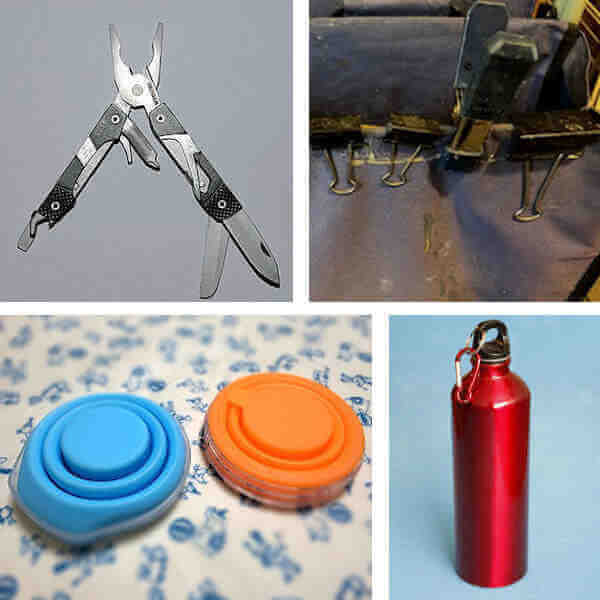
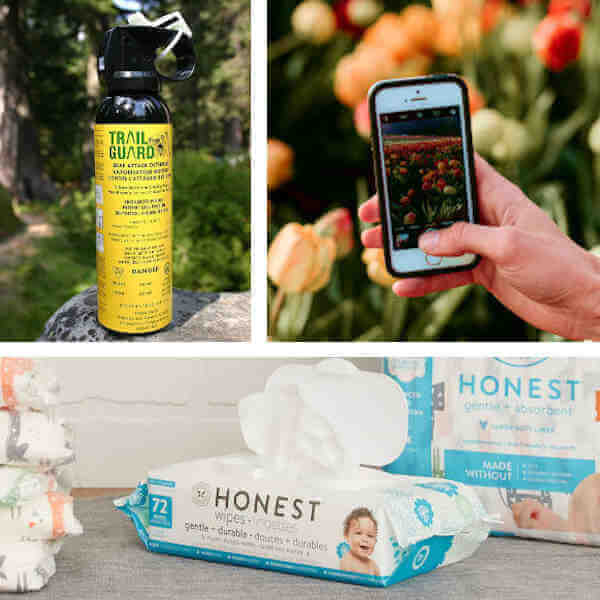
5. Bear Spray
Yep, you read that right. The contributor of this tip says “I always carry it if I’m painting alone (I’ve had a few creepy incidents and feel safer with it). I’d recommend it for anyone painting alone, especially in a remote location. Sometimes we can get so immersed in our work that we aren’t alert to potential dangers. It’s similar to pepper spray but not designed to debilitate bears, so it’s not as strong as pepper spray. It is designed to deter and stop a charging bear.”
6. Your Smartphone
Maybe this is a redundant point—do we ever go anywhere without it? But nowadays it’s become the go-to tool. Its camera is the most ubiquitous tool—you can take reference photos, convert them to black and white to see the values in the scene. iPhones have a compass, so you can track the movement of the sun and decide where to set up in relation to this important piece of information. You can set a timer, tell the time, text a friend, send for back-up, play music, make or dictate notes. Geo-tag your photos so in the future you can return to that exact same spot.
7. Baby Wipes
8. Bug Spray
If you’re me, you cannot leave without it. I am irresistible to mosquitoes and the like. If you stand next to me, you’ll probably not need any, as the mosquitoes will be seeking me. I spray my exposed limbs, my shoes and my hat. I often use natural repellents that are heavy on citronella. It has a strong smell—sorry, but it works.
9. Nitrile Disposable Gloves
Even if you don’t wear gloves to paint, these are great to have anyway. If you have to tackle anything you’d rather not handle because it’s dirty, use the gloves. Emptying garbage, pumping gas, cleaning you palette, wiping down your equipment is always easier if you don’t get your hands dirty. And they take up next to no room.
10. Carabiner
A carabiner can serve to suspend a solvent wash tank. It can be used to suspend a weight to hold your easel steady in the wind—just fill your backpack or your garbage bag with a few rocks and hang it from the center of your easel. Then, after you’re done you can use it to clip your solvent tank or trash bag to the outside of your backpack.

Region Specific
You may need to bring very specific supplies depending on where you paint. For example, in certain zones you may need to worry about snakes. If you’re painting in Northwest Europe, you have to think about rain gear. If you are very far north you may need additives to prevent your paint from freezing. Good luck and happy painting!
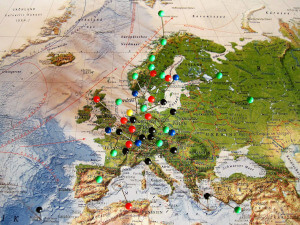
Thanks so much to Jane Hunt, Celeste De Coudres and Fallon Peper for their input.
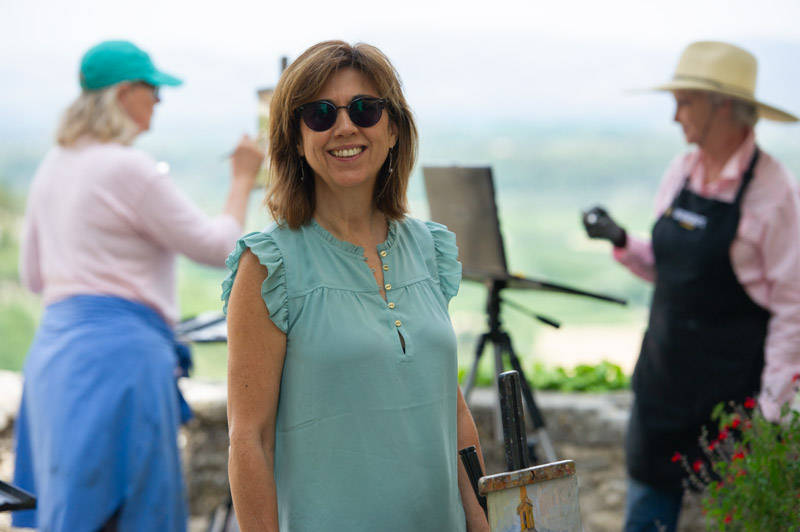
Blogger: Julie Snyder
Julie Snyder is a professional artist and also the programs director of Workshops In France. A native of Scotland, she is a seasoned traveler who splits her time between California and France. You can learn more about her role with Workshops in France here.
Your Artist Getaway Awaits
Check out more blogs about art workshops, tips and hacks for artists traveling in France, Scotland and Italy.
Vermeer to Van Gogh, Dutch Masters at Carrieres des Lumieres
This year we returned to the show titled; Vermeer to Van Gogh, The Dutch Masters and we were not disappointed. Included in the list of stellar painters from Holland are Vermeer, Rembrandt and Van Gogh. Imagine being transported inside these paintings when the projected masterpieces are monumental in size and you are able to observe the art pieces in ways you never imagined…
Family Affair in France
The art of traveling with family. It’s always a privilege to receive guests who decide to bring family members. We have discovered that one of the most enriching ways to experience a workshop or art retreat is to share it with a family member.
Glasgow Boys – A Scottish Art Rebellion
Their work, like other contemporaries around Europe, rejected traditional art styles and subjects and thrust the art scene into modernism. Like their counterparts on the Continent, these artists were ready to try something fresh and new when it came to painting.
